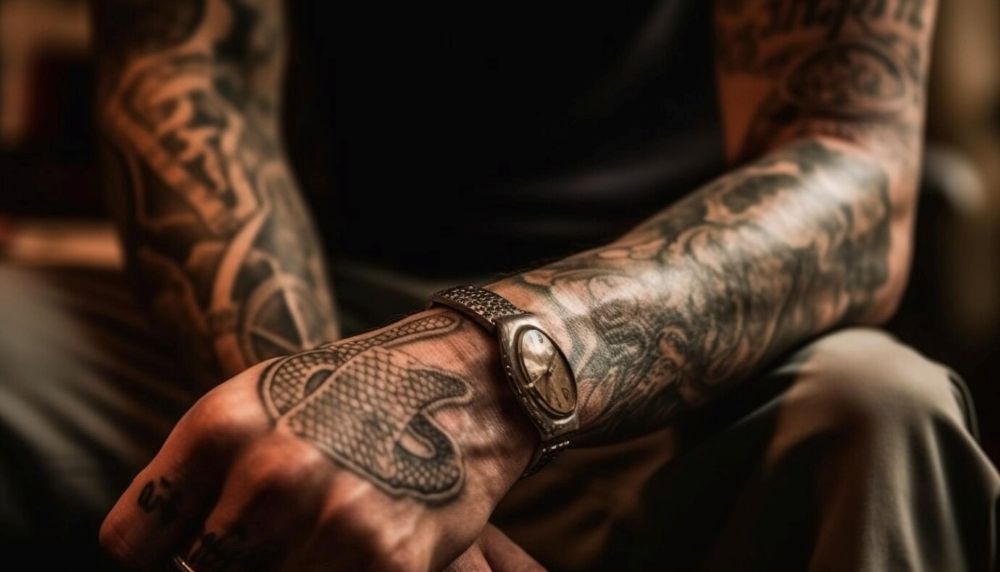Menu
close

When it comes to tattoo anesthesia, broadly speaking, there are 3 types of anesthesia that can be used to numb the skin and allow for pain-free tattooing: topical anesthesia, local (or infiltrative) anesthesia, and general anesthesia.
Yes, it is possible to get a tattoo with anesthesia, but not just any way or with any product. There are different anesthetic options — topical, local, or even professional tattoo anesthesia — that can reduce or eliminate pain during a session. However, not all are equally safe or suitable for every case, and their application must follow specific medical guidelines.

Topical anesthesia is generally applied in the form of anesthetic creams to the area of skin to be tattooed before starting to inject ink. It helps numb or slightly desensitize the skin and reduce the intensity of pain for a certain period of time.
The duration of this anesthesia will depend on the type of cream and the amount applied, but generally speaking, its peak effect lasts around 45 minutes; after that, the area begins to regain sensation and the pain gradually increases.
These creams contain varying concentrations of local anesthetics such as lidocaine, prilocaine, or benzocaine and, like any medication, are not free of side effects or adverse reactions due to improper application, misuse, or local allergic reactions. They can also alter the skin’s texture, potentially affecting the final result of the tattoo — which is why many tattoo artists are reluctant to use them.
This type of anesthesia is ideal for relatively small tattoos and less sensitive areas of the body.
Local anesthesia is administered via small subcutaneous injections (under the skin) of local anesthetics such as lidocaine in the area to be tattooed.
This is a much more powerful and effective option than topical anesthesia but also considerably more painful (due to repeated injections) and riskier. Great care must be taken with this type of anesthesia: knowing where to inject and controlling the total dose administered is crucial because its use is not free of serious complications. That’s why tattoo artists can never use this method (despite what some websites claim); it must be applied by licensed medical professionals who have the appropriate training and legal authorization to administer these medications safely.
This type of anesthesia is suitable for small tattoos in sensitive areas of the body, provided they don’t exceed the size of the palm of your hand and require longer sessions due to detail.
People often mistakenly refer to general anesthesia for tattoos when they should be talking about professional tattoo anesthesia. This type of anesthesia can only be administered by a professional anesthesiologist, who will tailor the anesthetic technique to the patient's condition and the tattoo project. Any anesthetic technique may be used, but the goal is to desensitize the skin and combine it with sedation to ensure immobility and comfort. General anesthesia can be considered, but it's typically excessive — like "using a cannon to kill a fly."
This type of anesthesia is ideal for large-scale projects, collaborations with multiple artists, and very sensitive or hard-to-reach areas that typically involve long sessions.

Depending on the type of anesthesia used, your tattoo may or may not hurt afterward. If topical or local anesthesia is used, it’s very likely that once the effect wears off, your skin will awaken with strong pain or a burning sensation. On the other hand, with professional tattoo anesthesia, there is no pain after tattooing. Why? Because in this case, your anesthesiologist will also treat the skin to eliminate inflammation, burning, and oozing. So, by the end of the session, the tattooed area is dry, nearly inflammation-free, and pain-free.
If you're considering getting a tattoo with anesthesia, have doubts, and want more information... your tattoo studio can inform you about inks, styles, and processing times, but any information related to anesthesia is likely to be inaccurate. We recommend that you only take advice from medical experts on this matter. In this case, at Sedalux — a benchmark in anesthetic services and a pioneer in the tattoo world — they can explain how the process works and what recommendations you should follow.